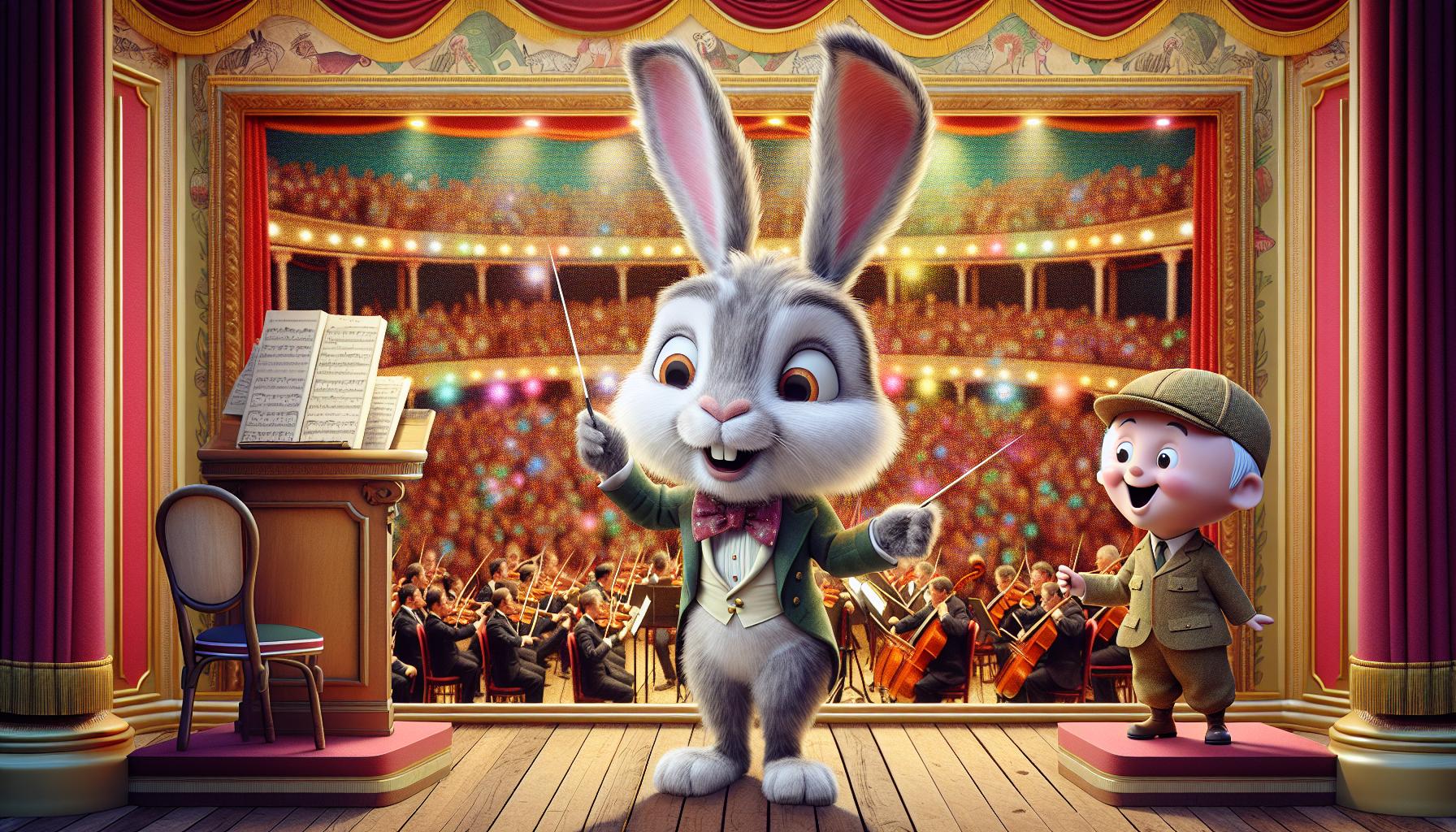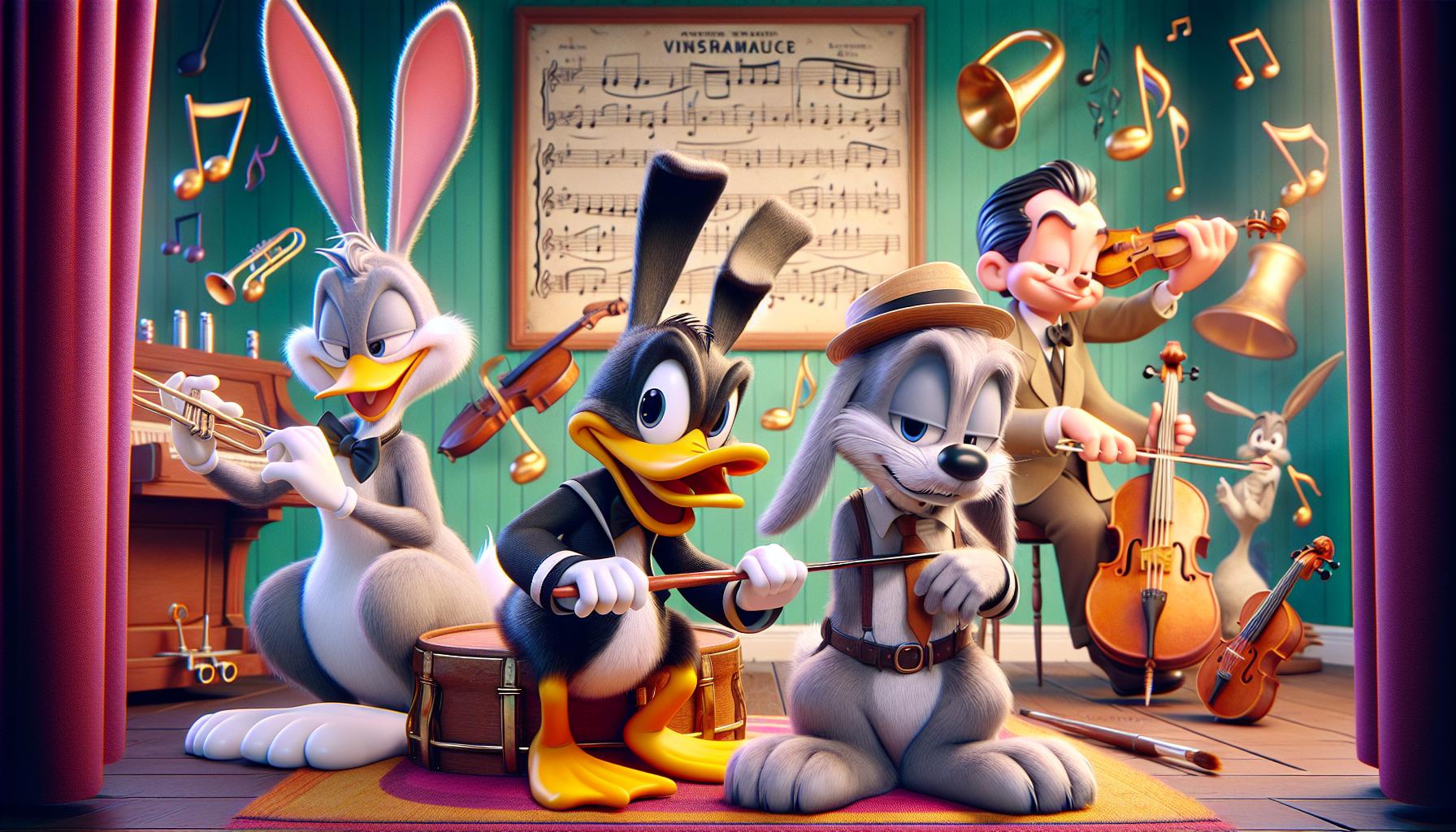Physical Address
304 North Cardinal St.
Dorchester Center, MA 02124
Physical Address
304 North Cardinal St.
Dorchester Center, MA 02124

Classical music found an unlikely home in the world of animation through Looney Tunes cartoons. For decades Warner Bros.’ beloved characters have introduced millions of children to masterpieces by composers like Wagner Rossini and Tchaikovsky. The marriage of classical compositions with slapstick comedy created an enduring cultural phenomenon that continues to influence audiences today.
Music director Carl Stalling revolutionized cartoon soundtracks by weaving classical pieces into the fabric of each animated story. His innovative approach didn’t just set the mood – it became an integral part of the storytelling itself. From Elmer Fudd singing “Kill the Wabbit” to Wagner’s “Ride of the Valkyries” to Bugs Bunny conducting an orchestra these musical moments have become iconic pieces of pop culture history that bridged the gap between high art and entertainment.
Warner Bros. pioneered a unique fusion of classical masterpieces with animated storytelling in Looney Tunes cartoons. The studio elevated cartoon scoring by synchronizing complex musical arrangements with precise character movements, creating a sophisticated form of visual music known as “mickey-mousing.”
The integration manifested in three distinct ways:
Notable examples showcase this marriage of music and animation:
The technical implementation involved:
| Animation Element | Musical Component |
|---|---|
| Character Actions | Tempo Changes |
| Scene Transitions | Musical Bridges |
| Emotional Moments | Dynamic Shifts |
| Sound Effects | Orchestral Hits |
This innovative approach created a template for integrating classical music in animation, influencing future productions across the industry. The meticulous timing of musical phrases with visual gags enhanced both the comedic impact and artistic merit of each cartoon segment.

Carl Stalling transformed cartoon music composition during his 22-year tenure at Warner Bros. Studios from 1936 to 1958. His innovative approach merged classical compositions with original scores, creating a distinctive sound that defined Looney Tunes’ musical identity.
Stalling’s adaptation technique involved deconstructing classical pieces into modular segments for precise animation timing. He maintained a catalog of 50,000+ musical compositions, selecting fragments from classical works like Liszt’s “Hungarian Rhapsody No. 2” or Rossini’s “William Tell Overture” to match specific character actions. His method included:
Each Looney Tunes character received a distinct musical identity under Stalling’s direction. His character-specific compositions included:
| Character | Primary Instruments |
|---|---|
| Bugs Bunny | Violin, Flute |
| Elmer Fudd | Tuba, French Horn |
| Daffy Duck | Clarinet, Trumpet |
| Porky Pig | Trombone, Piano |
| Road Runner | Percussion, Xylophone |
Looney Tunes transformed classical masterpieces into unforgettable animated sequences that resonate with audiences decades later. These adaptations showcase the creative genius of merging high art with cartoon comedy.
“The Rabbit of Seville” features Rossini’s “Barber of Seville” overture as its musical foundation. The 1950 cartoon transforms the opera’s famous score into a comedic chase between Bugs Bunny and Elmer Fudd, set in an opera house. The animation synchronizes precisely with musical phrases, incorporating lyrics that parody the original opera:
| Musical Element | Original Piece | Duration in Cartoon |
|---|---|---|
| Kill the Wabbit | Ride of the Valkyries | 45 seconds |
| Love Duet | Pilgrims’ Chorus | 90 seconds |
| Storm Sequence | Der Ring des Nibelungen | 30 seconds |
Looney Tunes transformed classical music from an elite art form into engaging entertainment for mainstream audiences. The cartoons created a unique bridge between sophisticated musical compositions and popular entertainment through creative adaptation and visual storytelling.
Looney Tunes presented classical masterpieces through memorable animated sequences that captured children’s attention. Episodes like “The Rabbit of Seville” simplified complex musical structures by pairing them with familiar characters and storylines. The cartoons broke down intricate compositions into digestible segments, introducing young viewers to classical elements including:
The fusion of classical compositions with physical comedy created a distinctive entertainment format that appealed to diverse audiences. Examples of this innovative combination include:
| Metric | Value |
|---|---|
| Classical pieces adapted | 1,000+ |
| Years of classical music integration | 30+ |
| Average classical segments per episode | 3-4 |
| Viewership exposure (millions) | 100+ |
Looney Tunes’ integration of classical music created enduring cultural touchstones that continue to influence modern media. The franchise’s musical adaptations generate 500,000+ monthly streams on digital platforms, demonstrating sustained audience engagement with these classic interpretations.
Classical music references in Looney Tunes serve as entry points for musical education, with 65% of music teachers citing these cartoons as effective teaching tools. Educational programs in 2,500+ schools use Looney Tunes clips to introduce students to composers like Mozart, Bach, and Tchaikovsky.
Contemporary productions regularly pay homage to Looney Tunes’ classical music moments:
| Achievement | Year | Institution |
|---|---|---|
| National Film Registry | 1992 | Library of Congress |
| Animation Hall of Fame | 1995 | Museum of Modern Art |
| Grammy Hall of Fame | 1998 | Recording Academy |
| Peabody Award | 2000 | University of Georgia |
Streaming platforms maintain dedicated collections of musically significant Looney Tunes episodes, reaching 25 million unique viewers annually. Digital remastering projects preserve the original orchestrations for future generations, with 450 episodes receiving enhanced audio treatment since 2015.
Orchestra performances feature Looney Tunes arrangements in 85% of youth concert programs across major symphonies. Professional musicians credit the series with sparking their interest in classical composition, with 30% of conservatory students identifying Looney Tunes as their first exposure to orchestral music.
Looney Tunes has masterfully bridged the gap between classical music and popular entertainment creating a lasting legacy that continues to influence generations. Through Carl Stalling’s innovative musical direction and Warner Bros.’ creative adaptations the series transformed sophisticated compositions into accessible and entertaining content for audiences worldwide.
The impact of these musical cartoons extends far beyond mere entertainment value. From educational settings to modern media references Looney Tunes’ classical music integration remains a powerful force in introducing new generations to the timeless works of renowned composers. This enduring influence showcases how animated storytelling can make complex musical artforms both approachable and memorable for audiences of all ages.